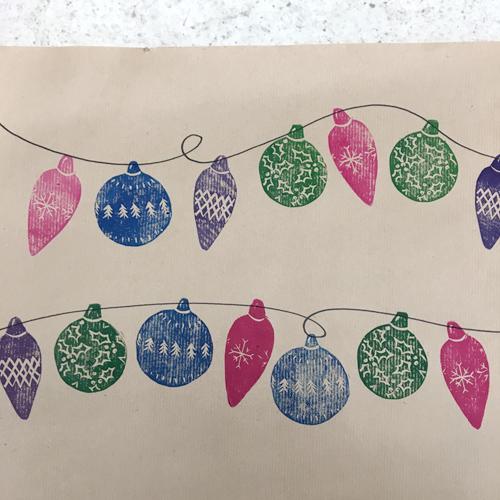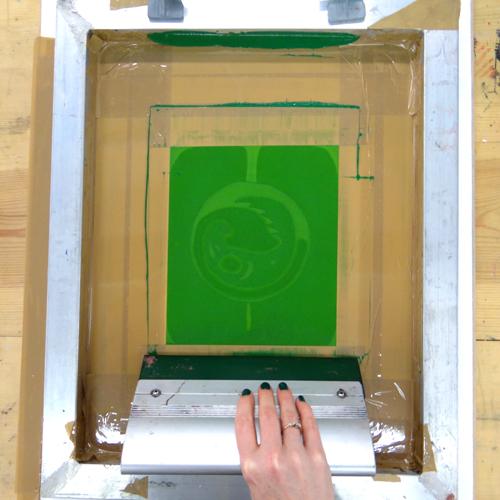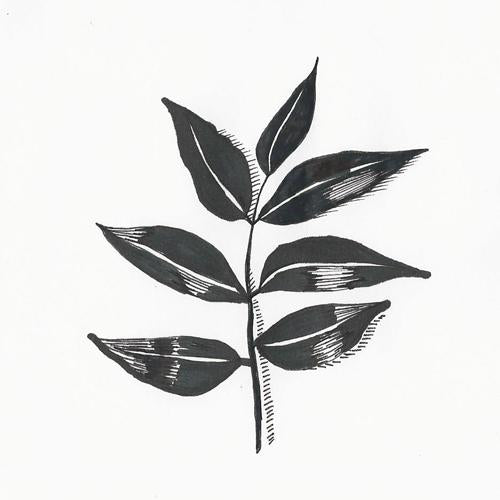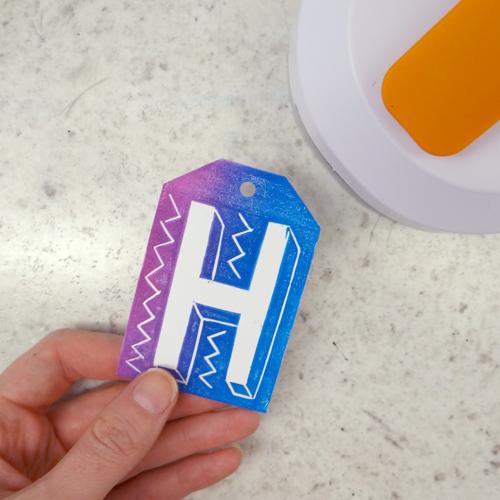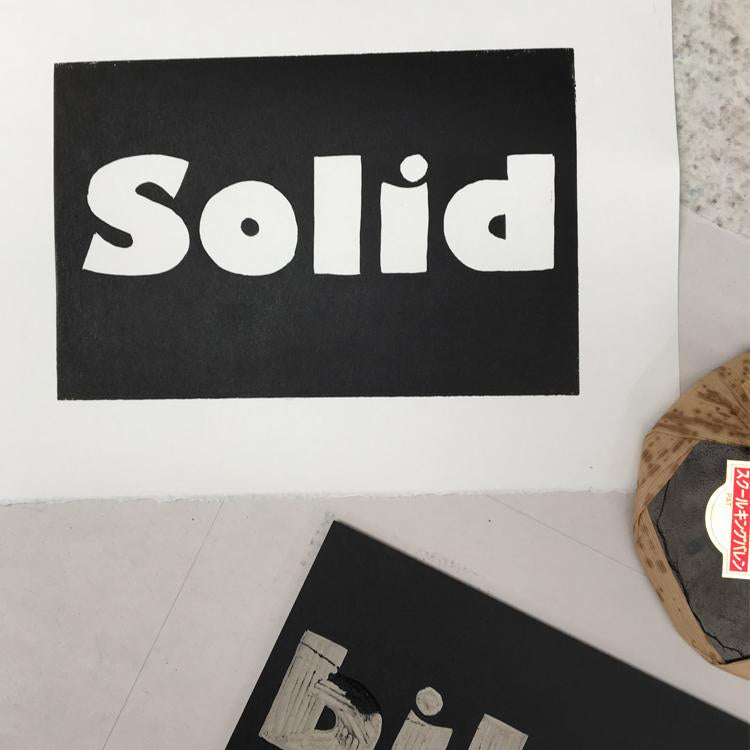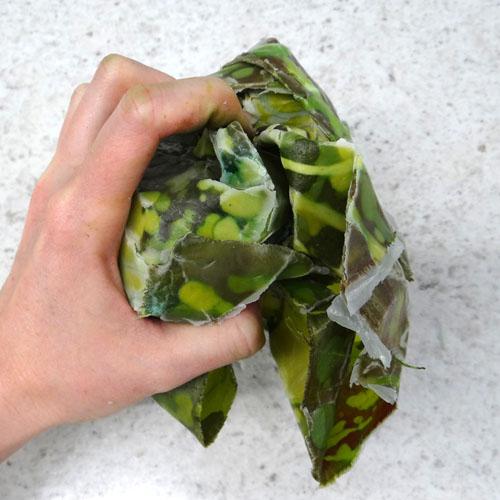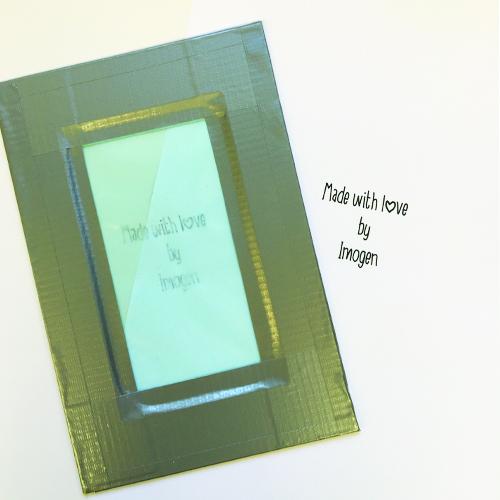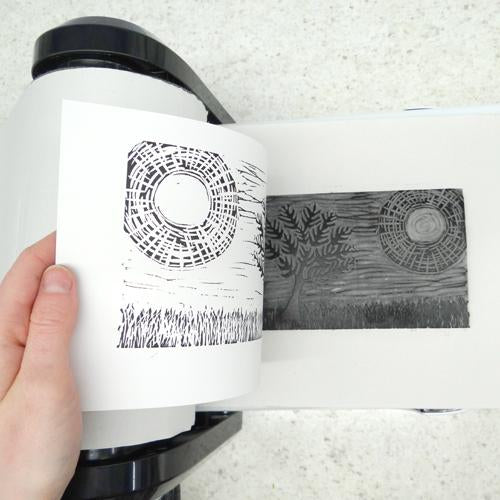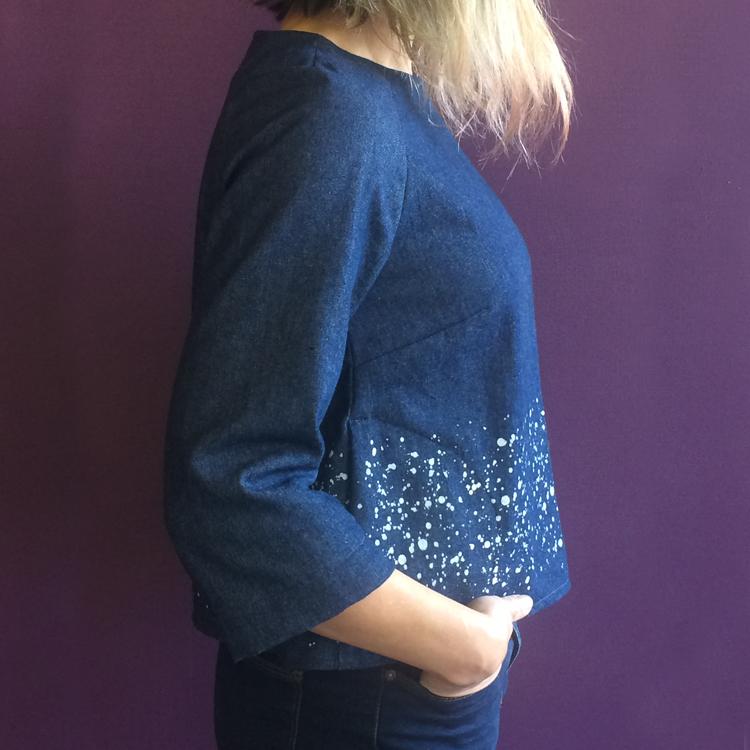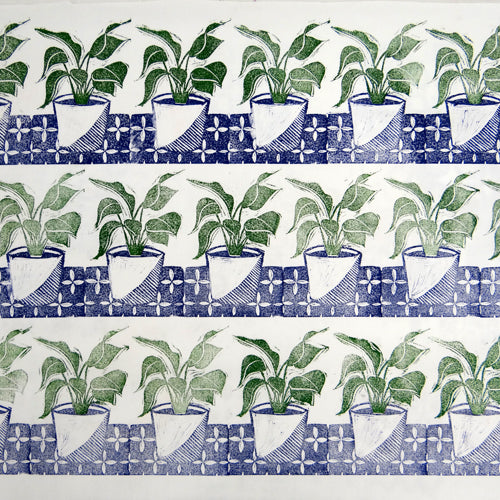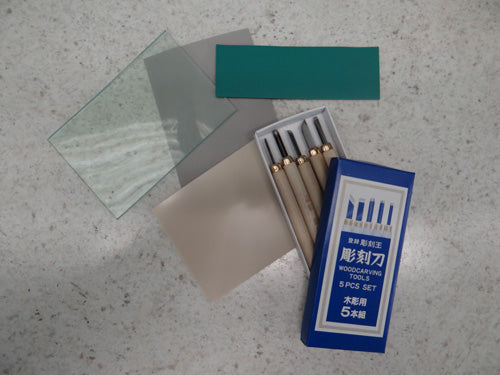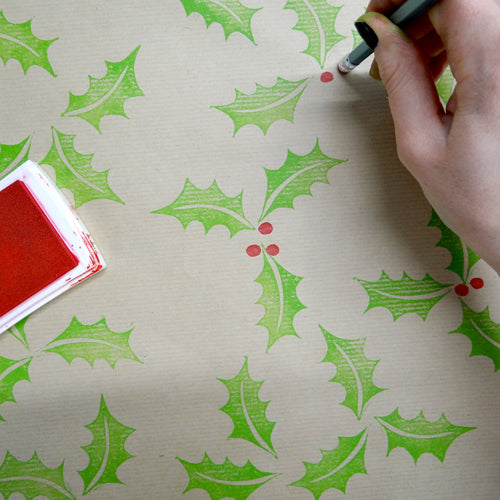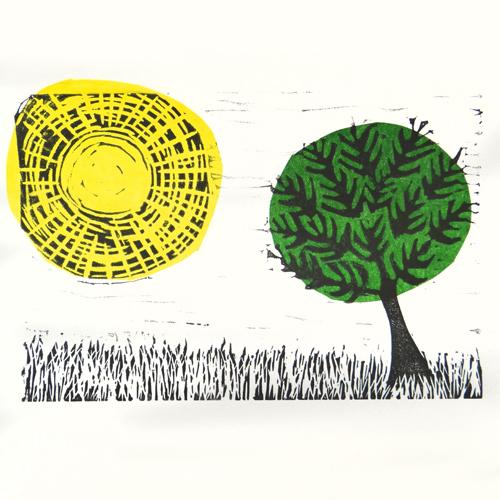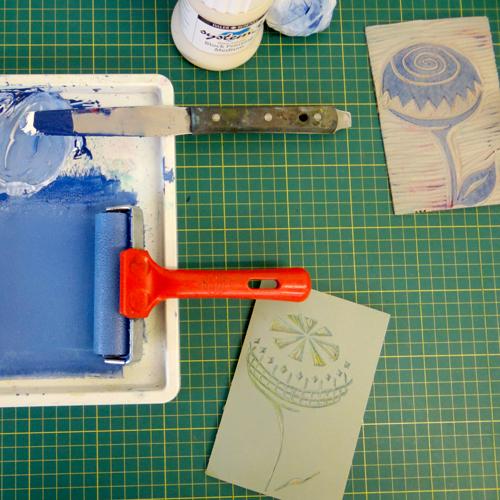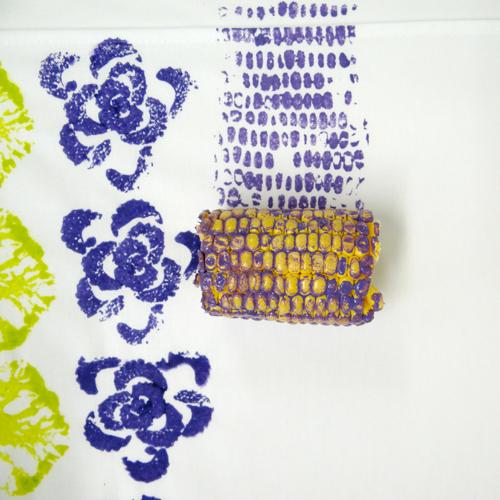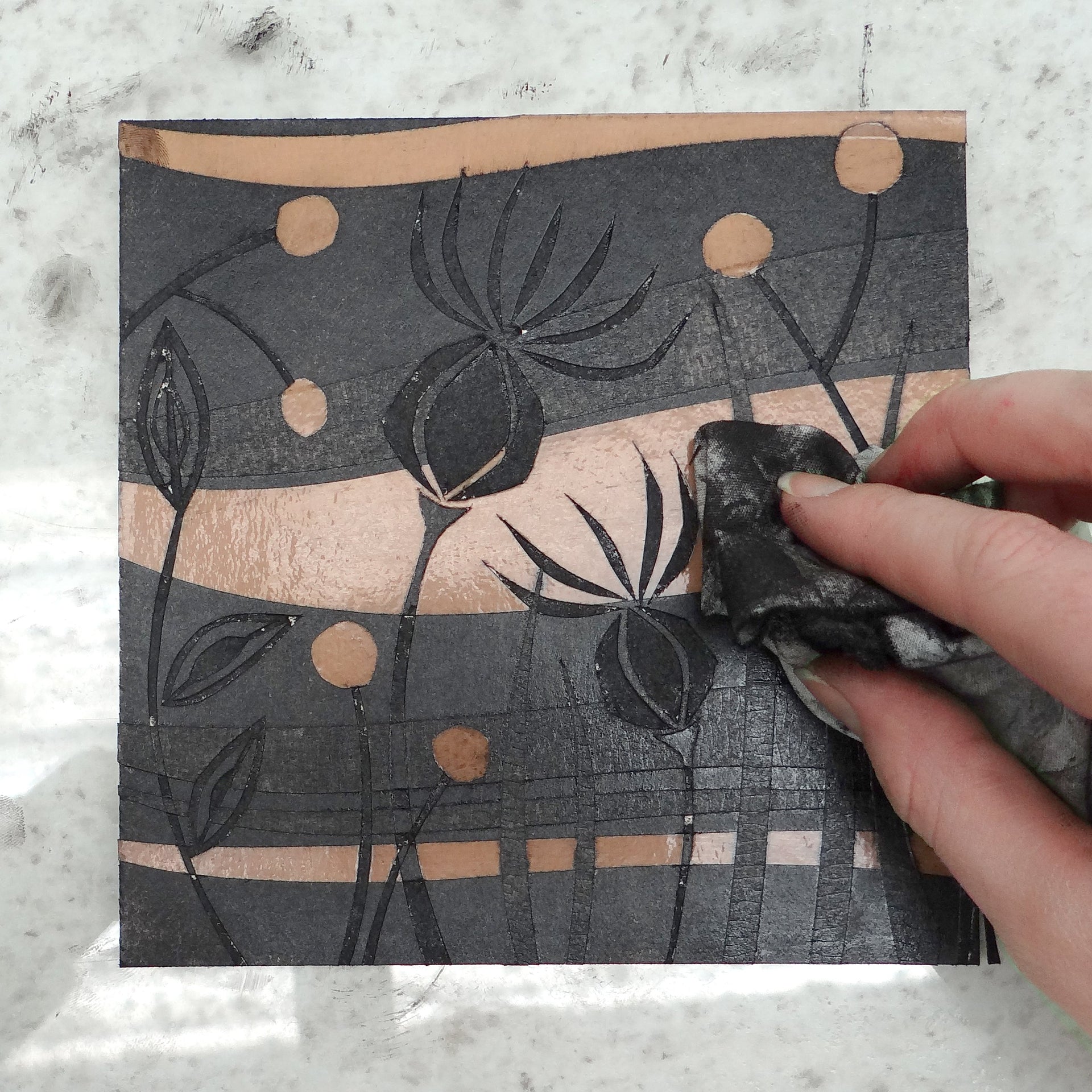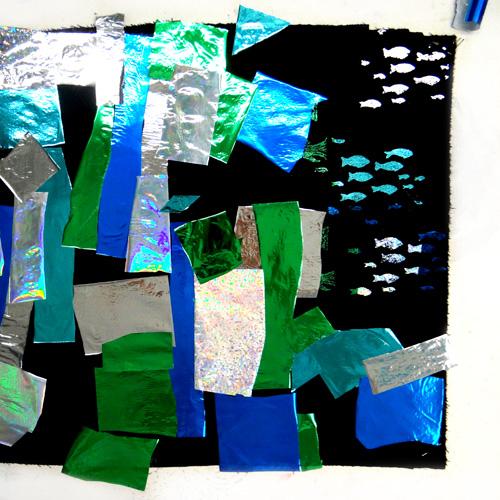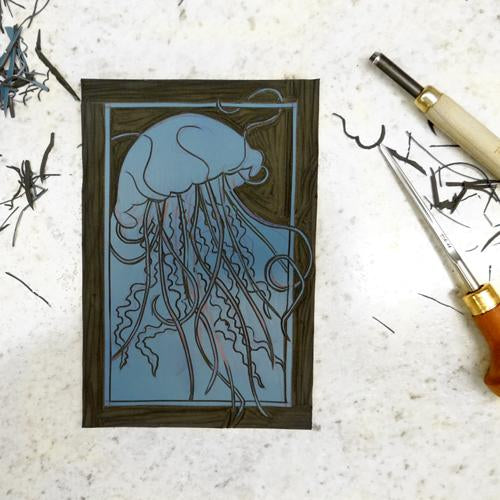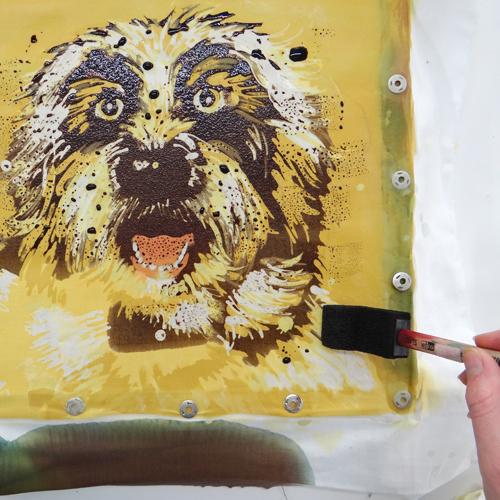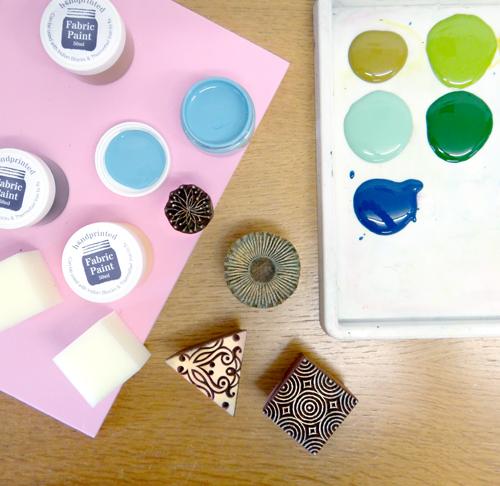-
With our Christmas Makers’ Market and our Christmas Fab Friday Workshop on last week, we’ve been getting in the festive spirit here in the Handprinted Studio. Our Fab Friday workshoppers printed sheets of wrapping paper that would add charm to any present. Here is a quick design we whipped up for the occasion that can …
-
In this project we will show you how to screen print onto paper using paper stencils. With this method, you can print multiples of your designs in several layers of flat colour without having to make an exposed screen or using screen filler. When screen printing, ink is forced through a fine mesh onto a …
-
Screen printing is a brilliant way to make the most of your hand drawn designs. It enables you to print them multiple times for framed artwork or cards or to create your own fabrics, bags and t-shirts. You can use your designs to make into photographic screens yourself at home or we can make them …
Continue reading "Getting a Drawn Design Ready for a Screen"
-
There is something really compelling about miniature objects. A miniature print sounds just too good to be true. Don’t worry about carving tiny detail – this project will shrink it down for you! Start with a sheet of Shrink Art Plastic – we’re using white. Cut out your desired shape with scissors or using a …
Continue reading "Printed Shrink Plastic Keyring"
-
One of the hardest things to do when printing a relief block (lino, vinyl or wood) is to print solid blocks of colour. There are quite a few choices to make and if you get these right then your printing will be much easier. Ink – an oil based ink will print better than a …
-
Batik can be a really fiddly process that may seem a little scary to try at first – but it doesn’t have to be! In this project we have layered wax and dyes to create a wonderfully abstract fabric design that can be used for embroidery, quilting, lampshades, clothing or just a piece of artwork …
Continue reading "Creating Layered Fabric Designs using Batik"
-
We have just launched our Ready Made Thermofaxes in a smaller size. The designs are the same as the Medium Ready Mades – just smaller (most images are about 6cm square). Thermofaxes are like a light weight screen and are great for printing your own textiles or papers. If you don’t know what a Thermofax …
Continue reading "Printing Labels with Thermofax"
-
The Xcut Xpress is traditionally used as a die cutting machine but has found a whole new life as a printing press! This small scale machine is portable, affordable and can produce amazing quality prints. We used our Xcut Xpress with Extended Print Bed and Felt to produce a linocut, a drypoint etching and a …
-
I have been longing to get my sewing machine out since I saw the gorgeous selection of patterns and fabrics that The Draper’s Daughter have on their website. They stock some beautiful linens and denims that are perfect for printing to make your garments a complete one off. I chose to start with Top …
Continue reading "Thermofax printed garments"
-
This project uses just one block of Easy Carve to create a two colour block print on fabric. This is an adaptable technique that will have you printing yardage in no time! Start by drawing your design out onto a piece of Easy Carve. Try using a pencil to map out your image and then …
-
Here at Handprinted we are always getting asked to explain the difference between all the lino relief blocks available. It can be very confusing knowing whether to choose traditional lino or try an alternative such as Softcut or Vinyl. To help you decide on the right material for you, we’ve tested five different blocks in …
"
-
Printing your own wrapping paper is an easy way to add a personal touch to presents. We know you’re all really busy this time of year so we’ve got four quick ways of creating lovely wrapping papers. Why not get children involved too? Thermofax Printing Start with a black pen drawing or image. Have a …
-
Chine Collé is a technique that allows you to add colour to your prints without making another block. Using Chine Collé you are able to print on much finer, more delicate papers which are bonded onto a more sturdy paper during the printing process. Japanese papers are often used but you can try tissue papers, …
-
Block Printing Medium transforms acrylic paints into usable block printing inks. Simply mix the medium with your paints and roll onto your block! Here’s how: Mix your Block Printing Medium with acrylic paint in a ratio of 3:2. If you want to print in a specific colour, mix your acrylic colour first and …
-
This project is a quick and easy way to get stuck into printing. It’s brilliant for children and just as good for grown-ups too! If you’re stuck in a rut with your printmaking, try this quick project to reignite your imagination and get those creative (vegetable) juices flowing. Raid the fridge for a selection of …
-
Collagraphy is a printing process in which a collaged plate is made and printed from.The different surfaces on the plate print varied tones and textures. Natural materials, papers and mediums can be added and are usually covered in a layer of shellac or varnish that is left to dry before printing. Here’s our method for …
-
Textile Foil is a brilliant way to bring more metallic vibrancy to your fabrics. It’s available in a wide range of colours and is easy to apply using Foil Adhesive. It’s even washable! In this project, we have applied the Foil Adhesive using a Custom Thermofax Screen. A thermofax is like a small silk screen that …
-
As soon as we received our first batch of printmaking vinyl we were keen to start gouging into it. This vinyl cuts beautifully and smoothly and can achieve very fine detail. There is a blue side and a green side, both of which can be used for carving. The centre of the vinyl is black …
-
Back in March last year we made a reduction linocut from a rather handsome picture of our very own Handprinted dog, Fletcher (of ‘Fletcher the Screen Printing Dog’ fame). The reduction lino process lends itself really well to this kind of image because of the tonal build up in the fur. You start by carving …
-
Indian Blocks come in a wide variety of designs perfect for printing onto fabric and paper. It can be a bit tricky to achieve an even, bold print on fabric so here’s our method of printing with these blocks! Handprinted Fabric Paints are perfect for printing these blocks onto fabric. We’ve scooped out a little …

